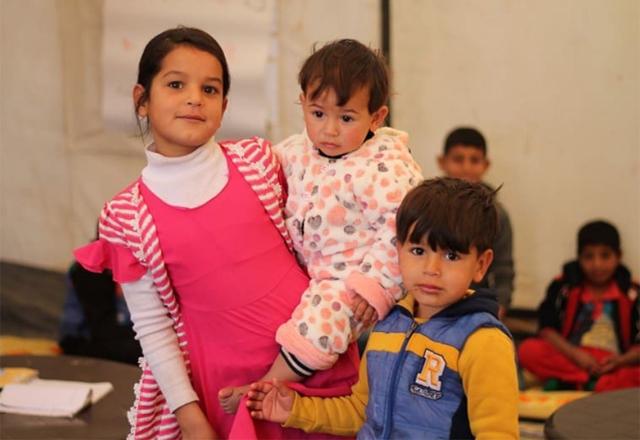More than 20 per cent of children in Jordan multidimensionally poor — UNICEF report

The Jordan Times
AMMAN — Over 20 per cent of children living in the Kingdom are multi-dimensionally poor, while half of its young women are not enrolled in education, according to a recent UN study.
The study noted, however, that “significant progress” has been made over the last decade in healthcare provision and in achieving near gender parity in early education and primary education.
The findings were revealed in UNICEF’s report titled “Geographic Multidimensional Vulnerability Analysis on Jordan”, which was launched during an event at the Columbia Global Centres on Tuesday.
Compounding financial crises, instability in the region, disruption in energy imports and the Syrian crisis have had a severe impact on the economy, according to the study.
“The data shows us that, in order to accelerate progress for children and ensure that no child is left behind, the best approach is one that targets the most disadvantaged children living in the most vulnerable communities, regardless of their nationality or status,” said Tanya Chapuisat, UNICEF Jordan representative.
Chapuisat stressed her organisation’s commitment to continue working with the government of Jordan to strengthen the key systems and institutions needed to lift children out of poverty, allow boys and girls to grow up healthy, educated and protected in a safe environment and empower and engage youth, particularly girls, to become future change-makers.
The objective of the study, according to UNICEF Jordan Chief of Social Protection and Policy Manuel Rodriguez Pumarol, included developing a geographic mapping tool for assessing performance and supply capacity of different sectors to identify gaps, improve the allocation of resources and enhance policy planning for extremely vulnerable groups.
The analysis examined several aspects of children’s well-being using Sustainable Development Goal (SDG) indicators to assess risks and needs of children and the wider population, according to Pumarol.
This vulnerability analysis was conducted using a sectoral assessment approach, covering several dimensions such as economic outlook and poverty, education, health, livelihoods, social protection, housing and municipal services, among others, Pumarol said during the event.
Among the key recommendations to drive the maximum progress for children, youth and their caregivers in Jordan, according to the study, were ensuring further expansion of early childhood education, continued investment in youth economic empowerment, greater coordination between stakeholders to improve the effectiveness of data and increased data to support child-friendly budgeting.
In addition, the study recommended continuing expansion of the social protection system, as “it is needed to support the most vulnerable children and expand access, with linkages to interventions for youth to empower them to transition from social assistance and engage in economic initiatives".
Making immediate, critical and targetted investments in the most vulnerable communities in Jordan could rapidly accelerate progress for children and move the country forward in achieving the SDGs in the next decade, according to the study recommendations.
Key points of UNICEF report
The UNICEF analysis, which covered a total of 13 multidimensional socio-economic vulnerabilities affecting children in Jordan, found that:
• 15.7 per cent of the Jordanian population live in poverty and 20.3 per cent of children (under 18 years) are multi-dimensionally poor
• While student performance is moving in the right direction, further investment is needed to improve the overall quality of education and increase equal access to early education
• Jordan remains one of the most water-scarce countries in the world and urgent investment is needed to promote conservation and reduce the 47.5 per cent of non-revenue water which is lost to leaks, theft or other causes
• One-third of children in Jordan have anaemia and on average 7 per cent of children sampled aged 12-23 months have not received any vaccinations, rising to 21 per cent in southern areas of the Kingdom
Courtesy of UNICEF
Latest News
-
 Syria monitor says US strikes killed at least five Daesh members
Syria monitor says US strikes killed at least five Daesh members
-
 Jordan welcomes lifting of US sanctions on Syria
Jordan welcomes lifting of US sanctions on Syria
-
 King hails Nashama achievement, Jordanians’ unity, resilience
King hails Nashama achievement, Jordanians’ unity, resilience
-
 Jordan finish runners-up after extra-time loss to Morocco in Arab Cup final
Jordan finish runners-up after extra-time loss to Morocco in Arab Cup final
-
 Egypt emphasizes 'Israel' gas deal is "purely commercial"
Egypt emphasizes 'Israel' gas deal is "purely commercial"